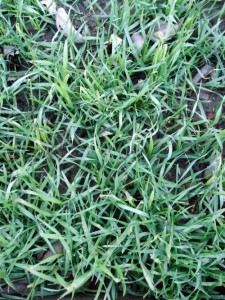In the November 2009 issue of Angie’s List Magazine, we looked at manures and how to use them in the garden. Below is the article.
Most of us know about compost as a soil amendment, but say manure to a lot of people and they, well, hold their noses.
When I suggest manure as a soil additive to customers at the garden center where I work part time, you can see the resistance. “Doesn’t it smell,” they ask? It doesn’t smell like manure, but rather, it has a rich, earthy fragrance. And, one of the best, cow manure, comes in 40-pound bags, which is a major convenience when you think about scooping it up yourself.
Animal manures are sustainable, plentiful and do a terrific job of improving the soil. They work slowly, releasing trace elements of nitrogen and other soil-building microorganisms. Over time, these organisms make the soil loamy and organically rich with improved drainage and moisture retention.
Dig manure into the soil when making new beds and add it to the vegetable garden after fall cleanup. Work it in the soil around existing perennials, shrubs and trees. Manure also can be added to the compost pile as a way to get it cooking. Here’s the poop.
Forms of manures
Most fresh or raw manures are not recommended for most plants because it is “hot,” containing urine, enzymes and other matter than will burn plants, or they may have disease-causing bacteria, such as E-coli. If you have fresh manure, it can be applied in fall to new, unplanted beds. Work it in the soil or layer it a few inches deep on the soil surface. It will break down over winter and the bed will be ready for planting in spring. Always use care when handling fresh manure. Wear gloves and wash thoroughly wash you hands and clothing after use.
Rotted, aged or composted manures are what are recommended for most gardeners. They will not burn plants because they have gone through a natural or manufactured process that reduces or eliminates weed seeds and disease-causing agents.
Green manure is a soil-building crop, usually legumes or annual grasses, sown in fall for winter cover, then turned into the soil in spring before planting. Green manures add nitrogen to the soil or help hold it there for the plants to use, along with other micronutrients.
Sources of manures
Cow — considered one of the best because what it eats goes through four stomachs, which reduces or eliminates weed seeds. Usually available in bags at garden centers.
Horse — also considered a good choice and is usually readily available at stables, where it is frequently mixed with straw, newspaper or other organic matter, which is an added bonus. Horse manure can be hot and contain a lot of weed seeds, so it’s best to allow it to age, rot or compost before use.
Pig — should be composted before use because it is hot and may contain disease organisms. Not usually recommended for gardens.
Poultry — should be composted before use because it is hot and has a bad order.
Rabbit — can be used fresh, mixed in the soil. Is generally high in phosphorus, which is the nutrient used for good flower and fruit production.
Sheep — should be composted before use because it is hot.
Manures from dogs, cats and other carnivorous animals are not recommended because they may harbor disease pathogens, which are contageous to humans. Many of these pathogens may survive the composting process.
Manure type Pounds/100 sq. ft.
Dairy, no bedding 75
Dairy w/bedding 90
Sheep, no bedding 40
Sheep w/bedding 50
Poultry, no litter 20
Poultry w/bedding 30
Horse w/bedding 65
Poultry compost 70
Dairy compost 200


Great article. I use composted chicken manure on the garden ever year, and every year, it gets better. I’ve also used cow and horse manures. My only problem with horse is the amount of seeds still in it. I had lovely flowers and veggies, but quite a crop of weeds too. 🙂 ~~Dee
Great info! I don’t use manures much because I can never find it when I want it. But I would most definitely if I could find a good supply.